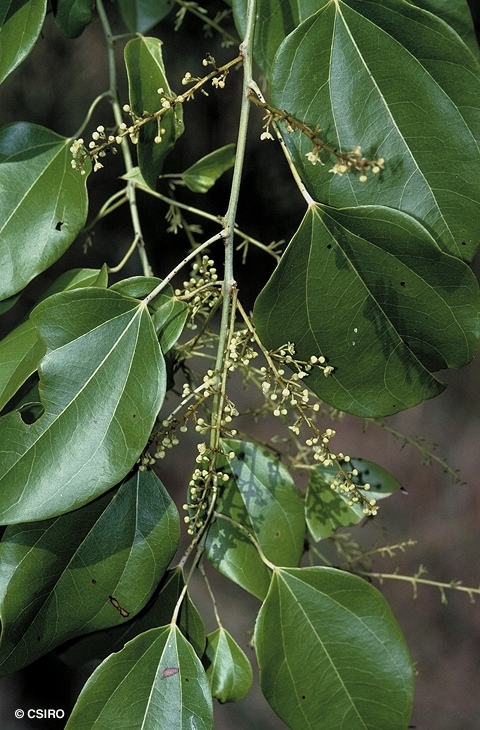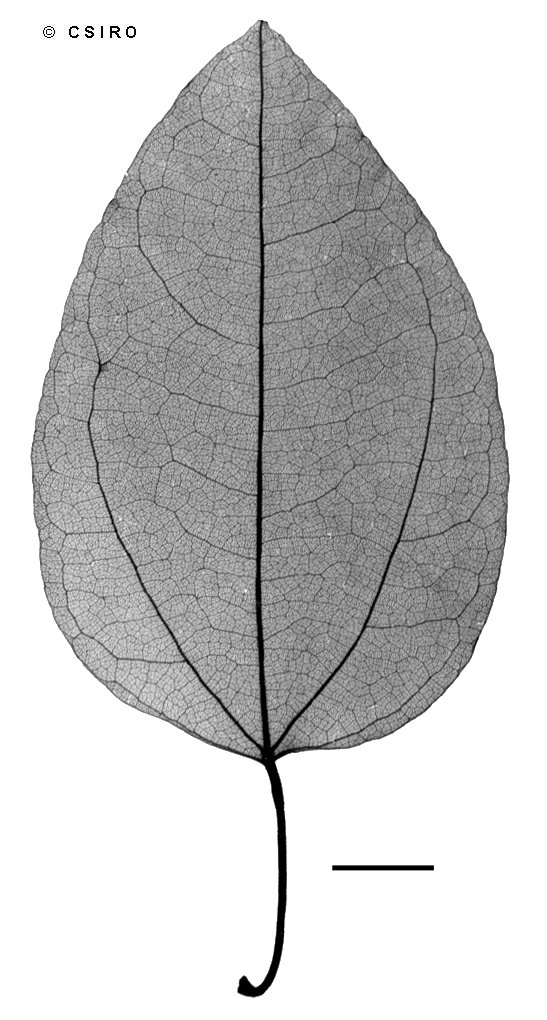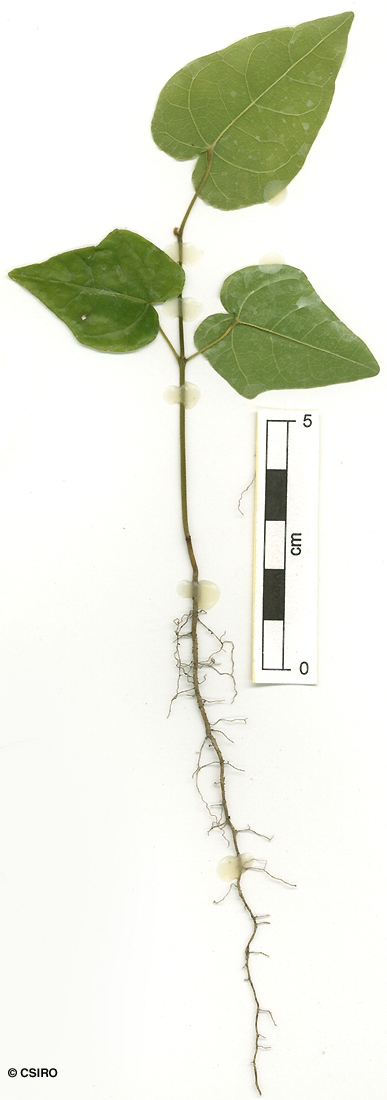Australian Tropical Rainforest Plants - Online edition
Pachygone ovata (Poir.) Miers ex Hook.f. & Thomson








Roxburgh, W. in Carey, W. (ed.) (1855) Flora Indica 1: 203.
Male flowers: Inflorescence about 5-15 cm long, consisting of a number of short racemes on a central axis. Sepals three + three in two whorls, the outer ones smaller, about 1 mm long, inner sepals much wider and about 2 mm long. Petals about 1.5 mm long, the base bilobed, the lobes clasping or enveloping the base of the staminal filament. Stamens five or six per flower, filaments about 1-1.5 mm long. Female flowers: Inflorescence a raceme. Sepals three + three in two whorls, the outer ones smaller, about 1-1.5 x 1 mm, inner sepals about 2 x 2 mm. Petals six, about 1.5 x 1 mm, basal auricles enveloping the base of the staminodes. Staminodes small, usually six. Carpels three, placed close together, stigma sessile at the apex of each carpel and projecting +/- at right angles to the axis of the carpel.
Fruits globose, slightly compressed laterally, about 6-7 mm diam. Style persistent, located close to the base of the fruit. Seeds (endocarps) about 5-6 x 5 mm, laterally compressed, outer surface somewhat sculptured. Embryo U-shaped. Cotyledons U-shaped, about 8-10 mm long. Radicle about 0.5-0.6 mm long. Endosperm scanty.
Cataphylls 1 or 2, produced before the first pair of true leaves. First pair of true leaves +/- cordate, apex acute, base cordate. Both the upper and lower surfaces of the leaf blades clothed in hairs. Margins usually with one large tooth or small lobe on each side. Pulvinus present on the petiole. At the tenth leaf stage: leaf blade cordate, about 9-10 x 5-6 cm, apex acuminate to apiculate, base cordate, midrib slightly raised on the upper surface. Terminal bud and stem clothed in brown hairs. Seed germination time 22 to 38 days.





